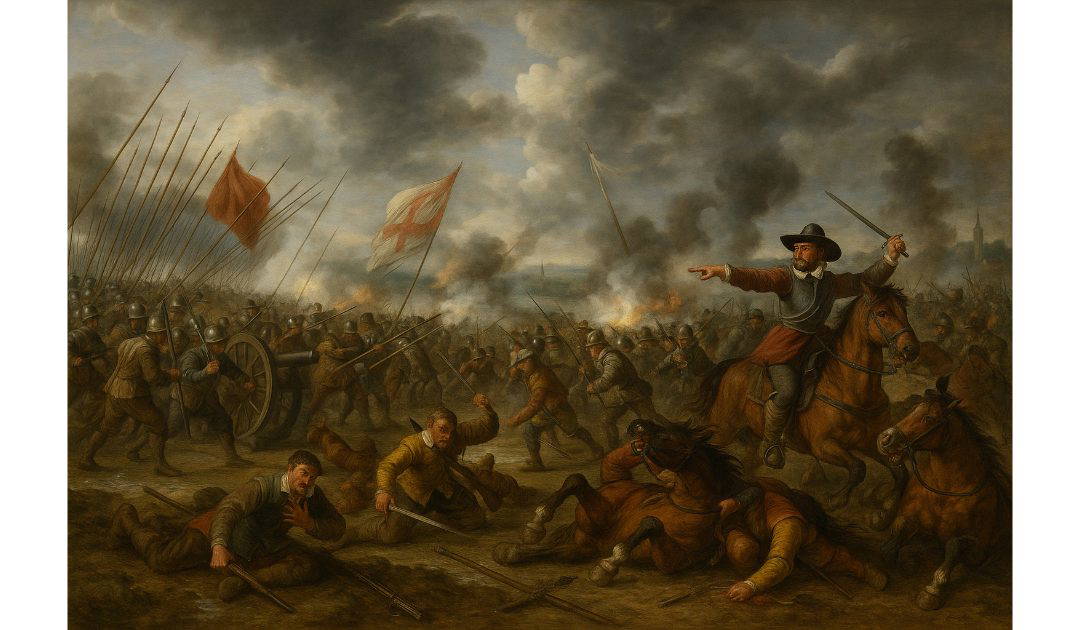The Battle of Jemmingen was fought on the 21st of July, 1568, during the Eighty Years’ War. At that time my ancestor, Sir Anthony Standen, was in Paris trying to gain the favour of the English ambassador. When Francis Walsingham took over as English ambassador, Standen was launched on his spying career. But we must return to Jemmingen.
The backdrop to the battle was the growing dissatisfaction in the Low Countries with the harsh Spanish rule, characterised by heavy taxation, suppression of Protestantism, and autocratic governance. William of Orange, a key figure in the Dutch revolt, sought to challenge Spanish authority by organising military campaigns aimed at liberating the region. In this context, Louis of Nassau, William’s brother, led a rebel army into the province of Groningen, hoping to stir local support and secure strategic footholds.
Louis’s forces had previously secured a victory at the Battle of Heiligerlee in May 1568, which provided a morale boost for the Dutch cause. However, this victory also provoked a swift and determined response from the Spanish authorities, particularly the Duke of Alva, an experienced and ruthless commander dispatched by King Philip II of Spain to quell the rebellion.
The Spanish army, disciplined and well-equipped, advanced towards Jemmingen with the intent of crushing the rebel forces. The rebels, numbering around 10,000, were a mix of enthusiastic volunteers and mercenaries, lacking the training and cohesion of their Spanish adversaries. In contrast, Alva’s army, consisting of approximately 12,000 seasoned troops, including formidable Spanish tercios—units renowned for their effective combination of pikes and firearms—possessed superior discipline and tactical experience.
On the day of the battle, Louis of Nassau attempted to position his forces advantageously along the River Ems, hoping to use the terrain to his benefit. However, the Spanish forces launched a relentless assault, employing disciplined musket volleys complemented by cavalry charges that overwhelmed the rebel lines. The rebels struggled to maintain formation under the intense pressure, and a breakdown in command led to chaos and disarray.
As the battle progressed, the Spanish forces exploited the weaknesses in the rebel defence, pushing them towards the river. Many rebels drowned attempting to escape, while others were cut down by pursuing Spanish troops. Estimates suggest that around 7,000 rebels perished, while Spanish casualties were minimal.
The aftermath of the Battle of Jemmingen was devastating for the Dutch rebels. The defeat demoralised the insurgent forces and demonstrated the formidable power of the Spanish military machine. Louis of Nassau managed to escape, but the loss severely hampered the early momentum of the rebellion.
Despite this setback, the Eighty Years’ War continued, with the Dutch eventually achieving independence through perseverance and shifting political landscapes. The Battle of Jemmingen remains a stark reminder of the harsh realities of early modern warfare and the resilience required in the pursuit of self-determination.

